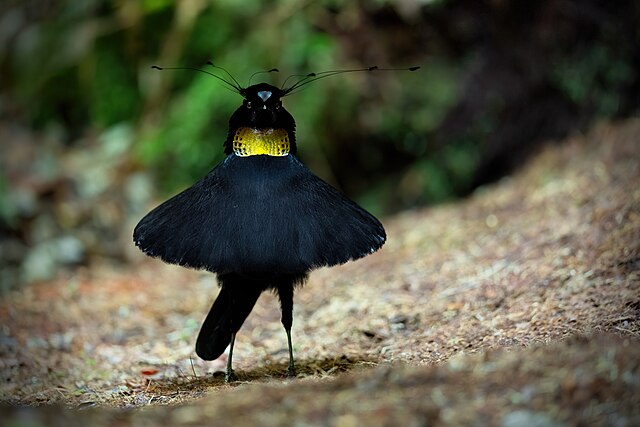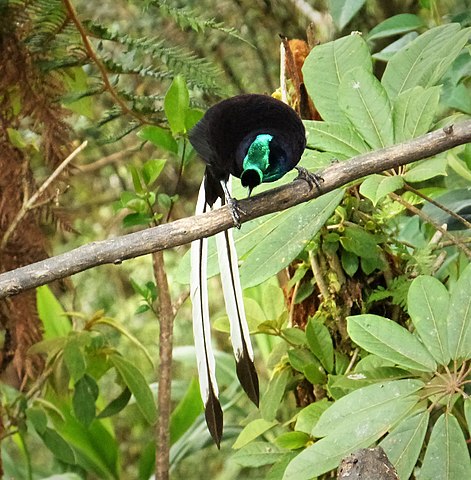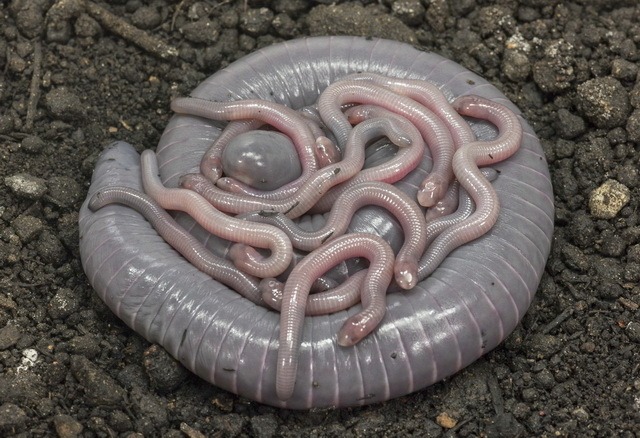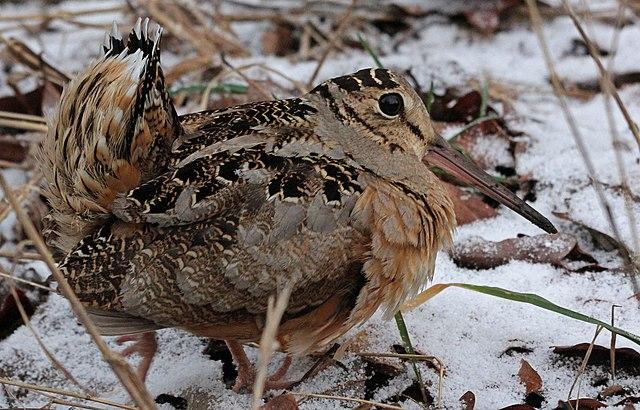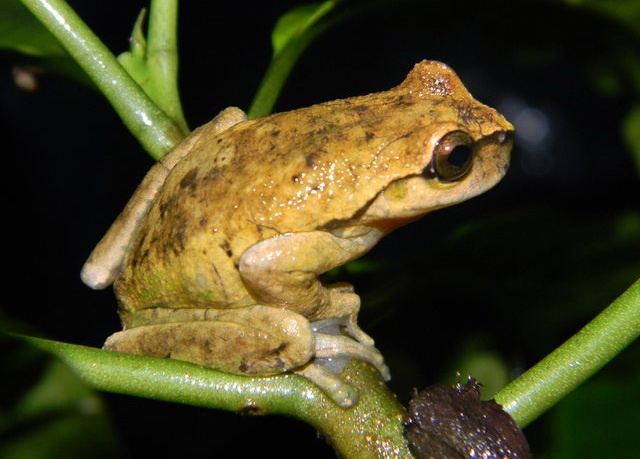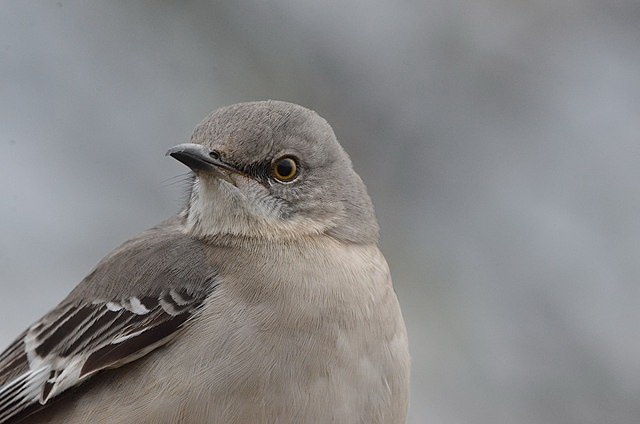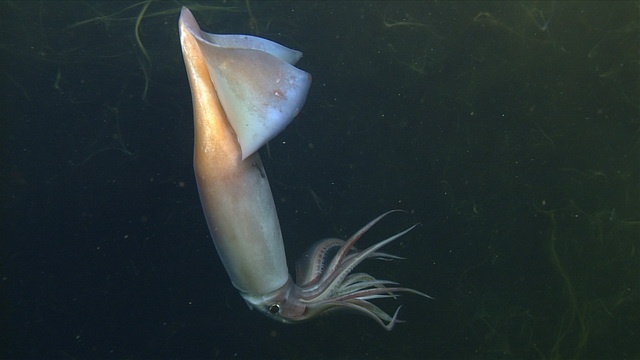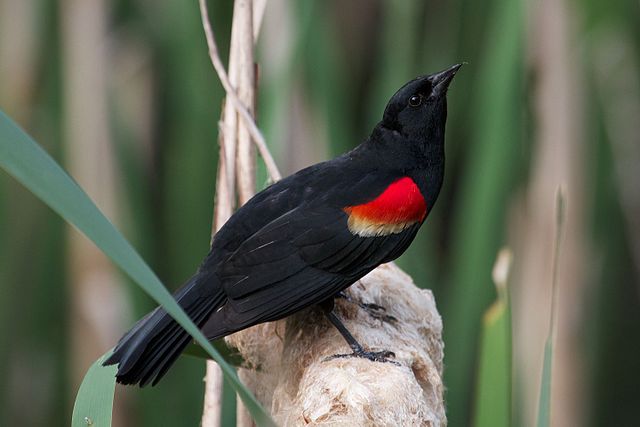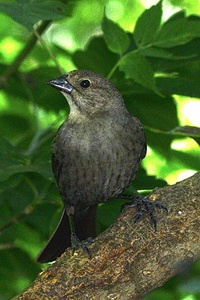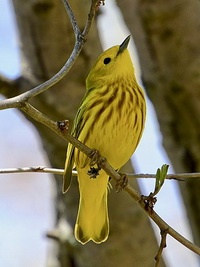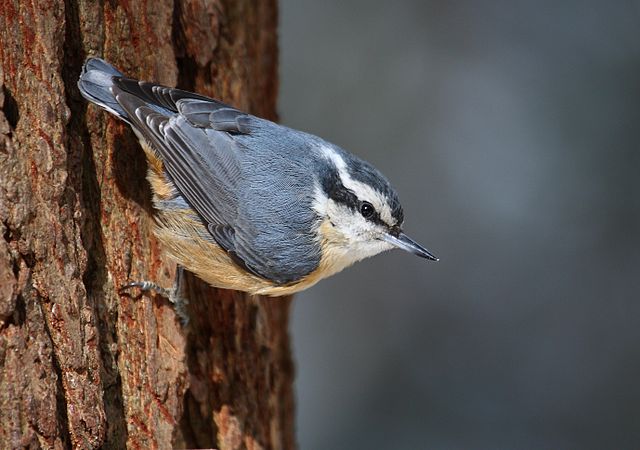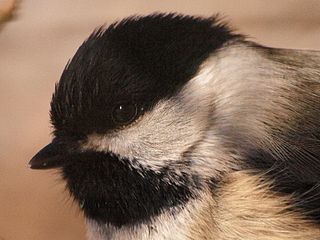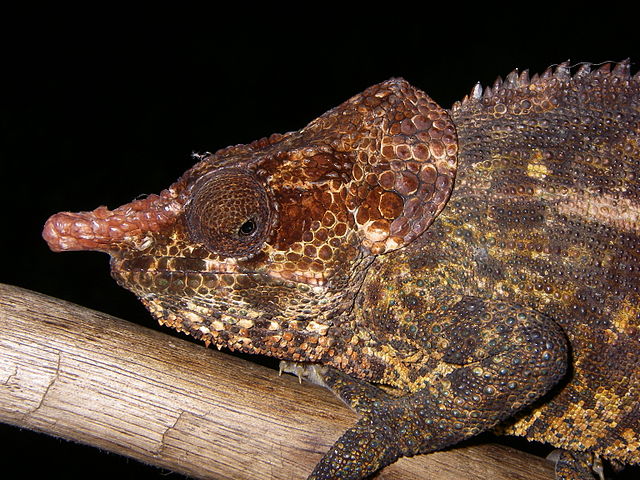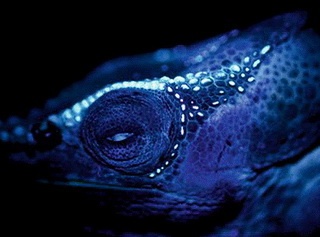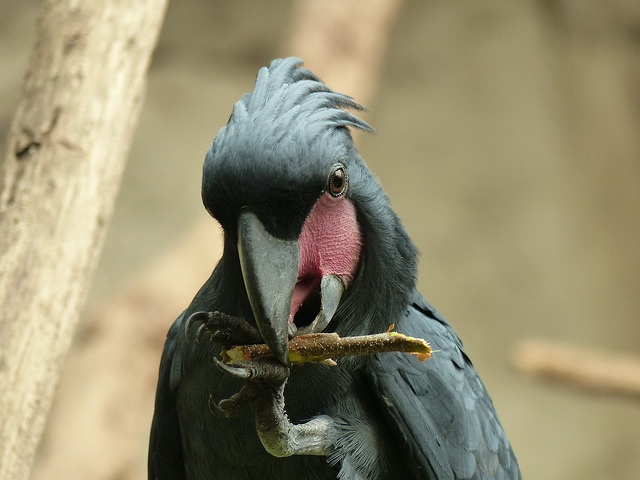Fluorescence enhances the splendour of a bird-of-paradise male
Most species of birds-of-paradise have feathers and skin patches that are fluorescent, Rene Martin and colleagues discovered. They can emit light.
Birds-of-paradise are known for their bright colours, striking ornamental plumage and exuberant courtship behaviour. But as if that wasn’t enough, it now turns out that they also emit light. Some areas of their plumage or skin can emit a green, yellow or blue glow, Rene Martin and colleagues discovered. It is a case of fluorescence, which means that an object absorbs light of a certain wavelength (i.e. colour) and re-emits the light with a somewhat longer wavelength.
There are 45 species of birds-of-paradise; they are found in New Guinea, northeastern Australia and parts of Indonesia. For the study, the researchers used the large collection of birds-of-paradise of the American Natural History Museum in New York. In a dark room, they shone blue and ultraviolet light on the birds to see if areas of their body glowed and if so, they analysed the light emitted.
Impress and seduce
In no less than 37 of the 45 species of birds-of-paradise they had success. Especially white and bright yellow feathers appeared to be fluorescent. When irradiated with blue light, fluorescent parts gave off a green or yellow-green glow, when irradiated with ultraviolet they lit up blue.
The phenomenon is stronger in males than in females. In most species, head, neck, belly, ornamental feathers and legs of males are luminous, as are spots on the inside of the mouth and throat. In females usually only the chest and belly can glow up. If females have the same pattern as males, the fluorescent area is smaller and less bright.
Fluorescence occurs in bird-of-paradise species where females take all care of the young and males can spend all their time seducing partners and impressing each other. The phenomenon reinforces the colourful image of a male trying to impress and therefore has a function in communication, the researchers state. They have a number of arguments.
Contrast
To start with, birds-of-paradise live in shadow-rich tropical forests. They are active on the forest floor or among tree leaves, where there is a lot of blue and ultraviolet light that can excite fluorescence.
Furthermore, fluorescent parts are located in conspicuous places or places that are displayed during rivalry or courtship. For example, dancing males often open their beaks wide to show the luminous spots inside. The birds can discern the emitted colours – green, green-yellow and blue – very well. And the luminous parts have a dark background for contrast. Other research has shown that many birds-of-paradise have super-black feathers against which their colours stand out extra brightly. That super-black is often seen around fluorescent feathers too.
Birds-of-paradise males have more features that enable a spectacular show than was known up to now. They are not the only birds that show fluorescence; parrots, puffins and nightjars, among others, also do. And other animals too; chameleons for example have blue glowing bone bumps on their heads.
Willy van Strien
Photos: fluorescent white and yellow feathers
Large: western parotia, Parotia sefilata. J.J. Harrison (Wikimedia Commons, Creative Commons CC BY-SA 4.0)
Small: ribbon-tailed astrapia, Astrapia mayeri. Gailhampshire (Wikimedia Commons, Creative Commons CC BY 2.0)
See the courtship dance of Parotia sefilata on YouTube
See also:
Super black feathers in birds-of-paradise
Chameleon’s head emits a pattern of blue light
Source:
Martin, R.P., E.M. Carr & J.S. Sparks, 2025. Does biofluorescence enhance visual signals in birds-of-paradise? Royal Society Open Science 12: 241905. Doi: 10.1098/rsos.241905
